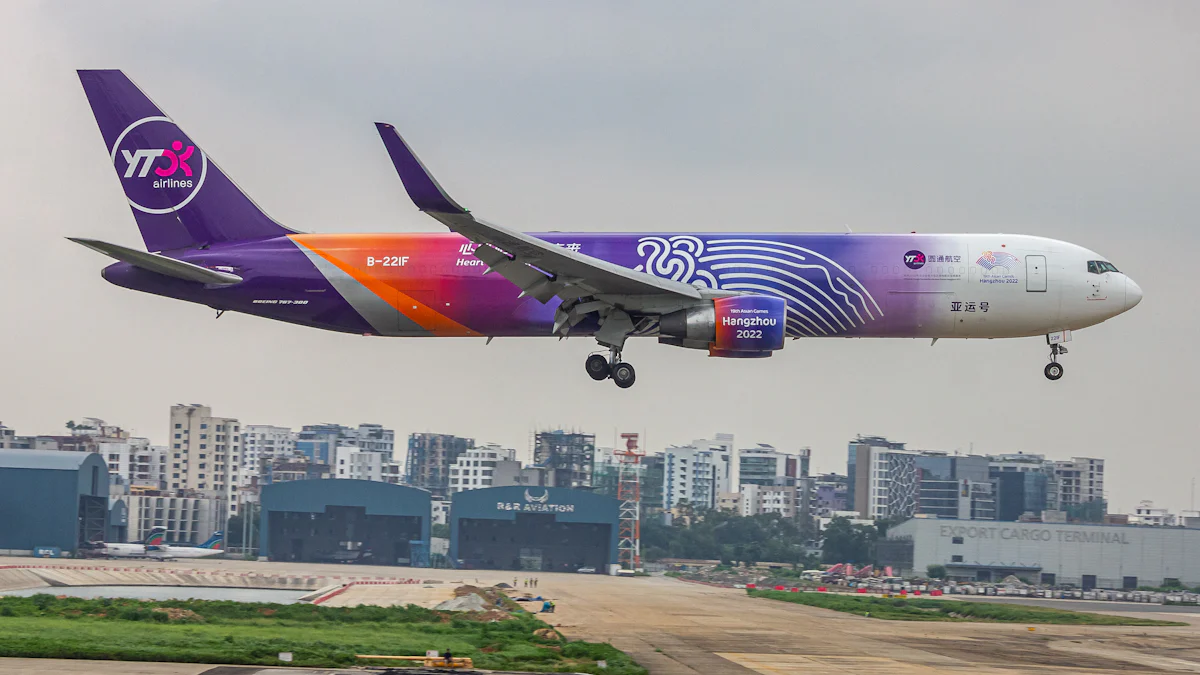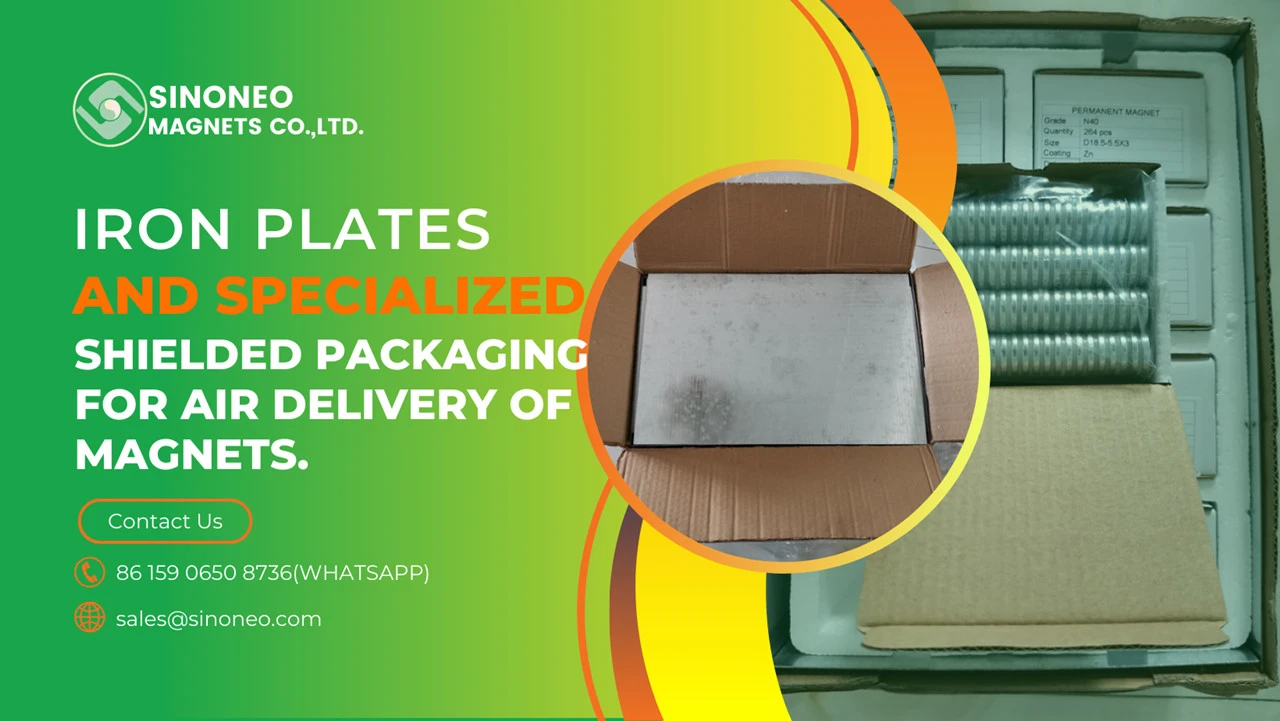
Navigating Airfreight Shipping of Magnets
When it comes to delivery magnets by air, understanding the complexities involved is crucial. The International Air Transport Association (IATA) has set specific criteria, such as magnetic field strength requirements outlined in the IATA Dangerous Goods Regulations Packing Instruction 953 (formerly 952), that must be met for materials to be considered air transportable. Proper packaging and documentation play a vital role in ensuring the safe and compliant airfreight of magnetic materials.
According to experts from the Japan Air Cargo Institute for Safety (JACIS), precautions are essential when handling magnetized materials to guarantee their safe transportation via air. This underscores the importance of adhering to regulations and guidelines to prevent any potential risks during airfreight operations.
In essence, navigating the airfreight shipping of magnets demands meticulous attention to detail, adherence to regulations, and a thorough understanding of the criteria set forth by regulatory bodies like IATA.
Understanding Airfreight Restrictions
When it comes to delivery magnets by air, one of the primary concerns revolves around the potential interference with navigation and electronic equipment on aircraft. Magnets can have a disruptive impact on plane equipment due to their magnetic fields, which can interfere with sensitive instruments and systems onboard. This interference poses a significant risk to the safe operation of the aircraft, prompting strict restrictions on shipping magnets by air.
The International Air Transport Association (IATA) classifies magnetic cargo as Class 9 dangerous goods during air transport. This classification highlights the potential hazards associated with transporting magnets by air and underscores the need for stringent regulations to mitigate risks. By categorizing magnetic materials as dangerous goods, regulatory bodies aim to ensure that proper precautions are taken to prevent any adverse effects on flight operations and aircraft systems.
In light of these considerations, it is evident that the restrictions on delivery magnets by air are primarily driven by safety concerns related to potential interference with critical navigation and electronic equipment. Adhering to these restrictions is essential not only to comply with regulatory requirements but also to safeguard the integrity and safety of air transportation operations.
Packaging and Documentation Guidelines
When it comes to airfreight shipping of magnets, proper packaging and documentation are essential aspects that cannot be overlooked. Ensuring the safe transport of magnetic materials requires meticulous attention to detail in both packing and paperwork.
Proper Packing for Magnetism Blockage
One crucial aspect of packaging magnets for air transport is to prevent their classification as Dangerous Goods. This classification can have significant implications for shipping regulations and safety protocols. Proper packing techniques, such as using shielding materials like iron plates, can effectively block magnetic field lines and reduce the risk of interference with aircraft systems. By employing suitable packing methods that mitigate the magnetic influence of the materials, shippers can enhance the safety of airfreight operations.
Essential Documentation and Labeling
In addition to proper packing, accurate documentation and labeling play a vital role in ensuring compliance with airfreight regulations. Shipments of dangerous goods, including magnetic materials, require specific documentation outlining the nature of the cargo, potential hazards, and handling instructions. Adhering to these requirements not only facilitates smooth customs clearance but also helps in maintaining transparency throughout the transportation process. Proper labeling further aids in identifying the contents of packages quickly and accurately, reducing the risk of mishandling or confusion during transit.
By following stringent packaging guidelines and meticulously documenting shipments, shippers can uphold safety standards, comply with regulatory mandates, and ensure the secure airfreight transport of magnets.
Magnetic Materials Regulations
Navigating the regulations surrounding the airfreight transport of magnetic materials is crucial to ensure compliance and safety throughout the shipping process. Understanding and adhering to the guidelines set by regulatory bodies like the International Air Transport Association (IATA) is paramount for successful and secure transportation.
Meeting IATA Magnetic Leakage Regulations
IATA has established specific criteria, including maximum magnetic field strength limits, for magnetic materials intended for air transportation. Compliance with these regulations is essential to prevent magnetic interference with aircraft systems and ensure the overall safety of airfreight operations. By meeting IATA’s magnetic leakage regulations, shippers can mitigate potential risks associated with transporting magnets by air and contribute to a smoother and more secure shipping experience.
Classification Based on Magnetic Force
The hazardous classification of magnets is determined based on various factors, including their magnetic force and potential impact on flight operations. Regulatory bodies consider the strength of the magnetic field generated by the materials when classifying them for air transport. For instance, magnets exceeding a certain magnetic force may be classified as dangerous goods due to their potential to interfere with navigation and electronic equipment onboard aircraft.
Statistics indicate that the maximum allowable magnetic field strength for materials transported by air is 0.159 A/m. This limit serves as a critical parameter in determining whether magnetic materials comply with airfreight regulations and can be safely transported via air.
By understanding the criteria set forth by IATA regarding magnetic leakage and considering factors such as magnetic force in classification, shippers can navigate magnetic materials regulations effectively and ensure the secure transport of magnets by air.
Shielding and Packaging Solutions

Ensuring the safe airfreight transport of magnets involves implementing effective shielding and packaging solutions that comply with industry standards and regulations. By utilizing appropriate materials and techniques, shippers can mitigate the risks associated with magnetic interference during transportation.
Effective Magnetic Shielding with Iron Plates
One common method for magnetic field blocking is the use of iron plates as shielding material. Iron plates have high permeability, making them effective at redirecting or absorbing magnetic fields emitted by magnets. By strategically placing iron plates around magnetized materials, shippers can contain the magnetic influence and prevent interference with aircraft systems. This approach not only enhances safety during air transport but also helps in meeting regulatory requirements for delivery magnets by air.
Special Shielded Packaging
Special shielded packaging solutions are designed to meet the specific requirements of air transportation for magnetic materials. These packages often incorporate high-permeability materials like cold-rolled steel or galvanized sheets to provide an additional layer of protection against magnetic leakage. By using shielded packaging that complies with air transport standards, shippers can ensure secure containment of magnets throughout the shipping process. This specialized packaging not only safeguards against potential hazards but also minimizes the risk of magnetic interference with aircraft equipment.
By employing effective magnetic shielding techniques with iron plates and utilizing special shielded packaging solutions, shippers can enhance the safety and security of airfreight shipments containing magnets.
Compliance and Safety Measures
Compliance with regulatory standards and the implementation of safety measures are paramount when it comes to airfreight shipping of magnets. Adhering to established guidelines not only ensures the safe transport of magnetic materials but also contributes to the overall integrity of air transportation operations.
Regulatory Compliance for Air Transport
Maintaining regulatory compliance is essential for shippers involved in air transport, particularly when handling magnetized materials. Strict adherence to safety rules and regulations set by organizations like the International Air Transport Association (IATA) is crucial to prevent potential hazards and ensure the secure movement of magnetic cargo. By following prescribed protocols and guidelines, shippers can uphold safety standards, mitigate risks, and facilitate smooth airfreight operations.
Demagnetization and Testing Requirements

To guarantee normal flight operations and assess the suitability of magnetic materials for air transport, demagnetization and testing procedures are often required. Demagnetization processes help reduce the residual magnetism in materials, minimizing the risk of interference with aircraft systems during transit. Additionally, magnetic testing is conducted to verify that magnetized items meet the necessary criteria for safe air transportation. These stringent requirements aim to enhance safety measures, prevent disruptions, and ensure that magnetic cargo can be transported securely by air.
It’s always a great idea to chat with the pros who know all about shipping magnets. They can give you some really helpful tips on making sure you’re following the rules and keeping things safe. Their know-how can help you figure out all the tricky bits and put your mind at rest about transporting magnetized materials.
By prioritizing regulatory compliance, adhering to safety protocols, and conducting necessary demagnetization and testing procedures, shippers can uphold high standards of safety in airfreight operations involving magnets.
Ensuring Secure Airfreight of Magnets
In conclusion, ensuring the secure airfreight of magnets requires a comprehensive approach that encompasses secure airfreight practices, proper packaging, labeling, and strict compliance with air transportation regulations. By prioritizing safety and adherence to guidelines, shippers can mitigate risks associated with magnetic interference, protect aircraft systems, and maintain the integrity of air transport operations.
Proper packaging plays a crucial role in containing magnetic fields and preventing potential hazards during transit. Effective labeling ensures clear identification of magnetized materials, reducing the likelihood of mishandling or confusion. Compliance with air transportation regulations, including those set by organizations like IATA, is essential for upholding safety standards and ensuring seamless shipping processes.
By implementing secure airfreight practices, utilizing appropriate packaging solutions, and following regulatory requirements diligently, shippers can enhance the safety and reliability of transporting magnets by air. Prioritizing these measures not only safeguards against potential risks but also contributes to the overall efficiency and effectiveness of airfreight operations involving magnetic materials.




0 Comments